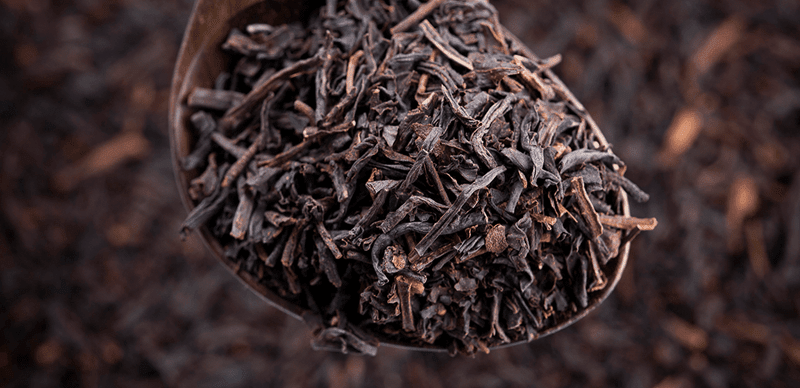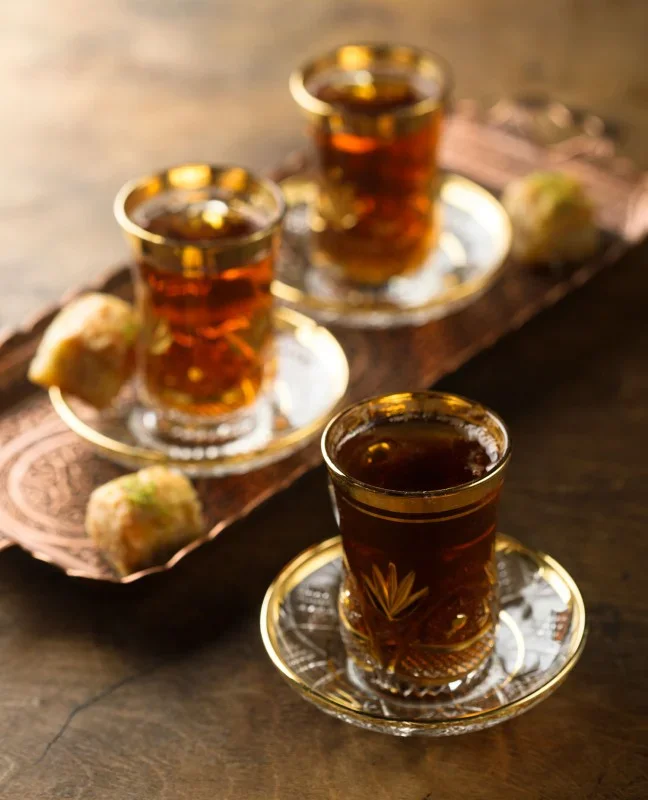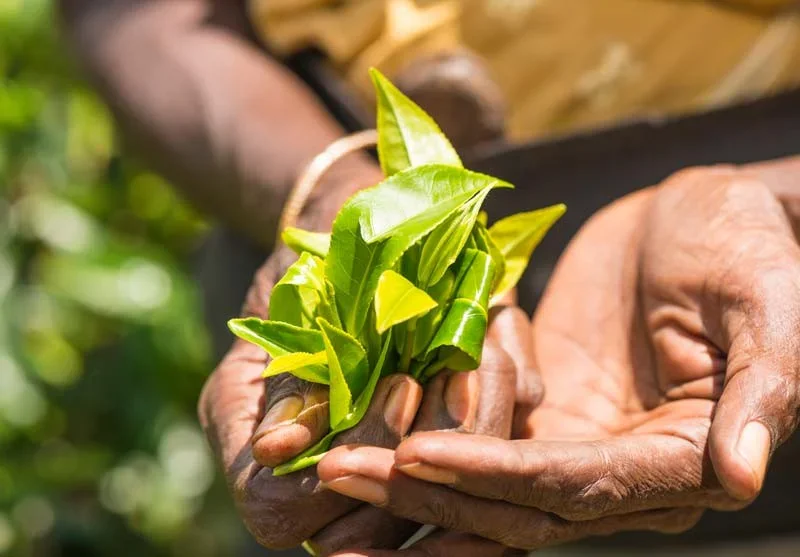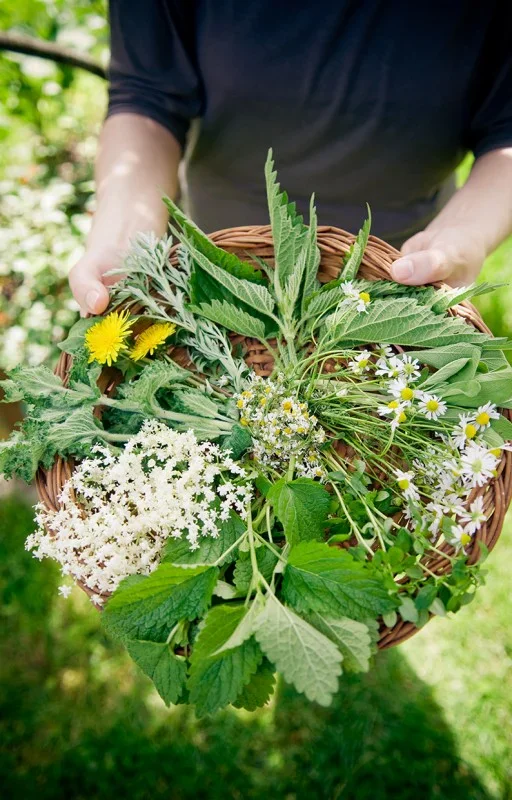
Black tea
The differently processed, oxidized variant of the tea leaf is considered a national drink as black tea, especially in Asia. It has also found its way into Western households as a symbol of hospitality.
All about black tea
Black teas:
A hot drink with a European flavor
Black teas are fully oxidized teas. This means that the ingredients in the tea leaves react with the oxygen in the air during processing and turn brown. They therefore look and taste very different to green teas, where this process is prevented.
The long journey of black tea
In the original countries of origin, black teas only played a subordinate role for a long time. In China and Japan, people preferred - and still prefer - to drink green teas, partially oxidized oolong teas or fermented Pu Erh teas. However, China has also been producing black teas for export for almost 200 years, while the British have been producing black teas in their colonies from the very beginning, i.e. for just over 150 years. Originally, this type of tea was created because it was more robust and the goods spoiled less quickly on the long sea route to Europe. Over time, however, European tastes became completely adapted to black teas and developed their own tea culture. Particularly in England with the late afternoon "high tea", but also in East Frisia with the East Frisian tea ceremony with Kluntjes and cream, very special forms of preparation and enjoyment developed. Teas from the gardens and plantations established in the 19th century in what was then British India are still among the best-known varieties today: fine teas from the highlands of Darjeeling, strong, malty teas from the Brahmaputra river valley in the Assam region, spicy teas from the highlands of Sri Lanka. "English Breakfast" is a strong blend of Assam, Ceylon and often Kenya teas. "Earl Grey, named after the aristocratic British Prime Minister Charles Grey from colonial times, is a black tea flavored with essential oils from the peel of the bergamot citrus fruit.Production and plantations
Today, a large proportion of black tea for the mass market is produced in Africa, in former British colonies such as Kenya and Malawi. The plantations there supply a large proportion of the machine-processed black teas that can be found in many tea bags. These are teas whose leaves are rolled, plucked and crushed using special machines. This makes them more productive - however, many of the finer aromas are lost during the somewhat rough processing of such "broken teas". These are more likely to be found in "leaf teas", where the tea leaves remain relatively intact. samova black teas are all fine, single-vintage organic plantation teas from certified growing regions such as Darjeeling, Assam, Sri Lanka, China, Japan and Thailand.


Nevertheless, the caffeine content of individual varieties varies considerably in both black and green teas. It depends on many factors: the type of plant and cultivar, the age of the plant, which leaves are picked at which time, the soil conditions, the altitude of the growing area and the specific microclimate. Some of these factors reinforce each other, others balance each other out. It is therefore quite possible that a green tea has more caffeine than a certain black tea.
The availability of caffeine for the human organism also varies from variety to variety. In green teas, the caffeine is integrated into its natural biochemical compounds. It is therefore absorbed more slowly by the body, but has a more lasting effect. In black teas, the caffeine becomes available more quickly due to oxidation. At the same time, oxidation also produces other substances that have a calming and balancing effect on the mind. In addition, the strong tannins in black teas bind the released caffeine.
And finally, there is another important factor: the tea drinker. Everyone reacts differently to caffeine, some people are highly sensitive, some can tolerate large doses without any noticeable effect... So the basic rule is: try it out!
The steps in detail:
Withering: The freshly picked leaves are laid out on bamboo mats in the sun or in large, ventilated halls. Within a few hours, more than half of the water escapes and the originally plump leaves take on a limp textureRoles: The leaves are then rolled and kneaded by hand or with small machines. This causes the cells inside the leaf to break open, the juice escapes and reacts with the oxygen in the air
Oxidize: The leaves are left to air until they have turned from green to brown. This is the decisive step towards black tea. Green teas are quickly heated after rolling to prevent oxidation.
Forms: Like green teas, some black leaf teas are also shaped by hand, for example rolled into small balls/pearls or curved "eyebrows".
Roasting/drying: Finally, the withered teas are dried or roasted in the sun, over a wood fire or in hot fans.
All steps require the guidance of a knowledgeable person who knows exactly when the right time has come for which step and how long oxidizing or drying, for example, may take. These "tea masters" are the key players in tea production.
In the following, the grading - and thus often also the taste quality - is made more and more precise by means of letter abbreviations:
BOP – Broken Orange Pekoe = crushed black tea, particularly high yield FOP- Flowery Orange Pekoe = Whole leaf tea with buds that are still unopened GFOP – Golden Flowery Orange Pekoe = Whole-leaf tea with shimmering golden buds TGFOP- Tippy Golden Flowery OP = Especially many golden bud tips ("tips") FTGFOP - Finest Tippy Golden Flowery OP = besonders viele, besonders feine goldene »Tips« SFTGFOP - Super Finest Tippy Golden Flowery Orange Pekoe – uff… superfein halt!
Außerdem gibt es noch sogenannte »Fannings« = gesiebte Tees mit Bröseln, die bei der Herstellung der Broken Teas durchs Sieb fallen. Und schließlich den »Dust« – den ganz klein gemahlenen Teestaub, der in den normalen Doppelkammer-Teebeuteln landet.
In England, too, tea is often drunk with milk and sugar for breakfast. Our "English Breakfast" blend consists of Assam and Ceylon tea. It tastes spicy and hearty, but is not quite as strong as the malty, dark East Frisian blend.
Unlike the other blends, "Earl Grey" is additionally flavored with the oil of the bergamot citrus fruit, a lime-like fruit grown in China. Charles Grey, also known as the "Earl of Grey", was British Prime Minister in the 1830s and is said to have received the flavored tea as a gift from the Chinese imperial court. The black tea base for this tea varies: Traditionally, it was mild Chinese Keemun tea, but the English soon replaced it with their own, spicier Ceylon tea - which was better to drink with milk. At samova, we build on tradition plus innovation and combine the best Chinese tea with fine Darjeeling in our Earl Grey variety Lazy Daze.

